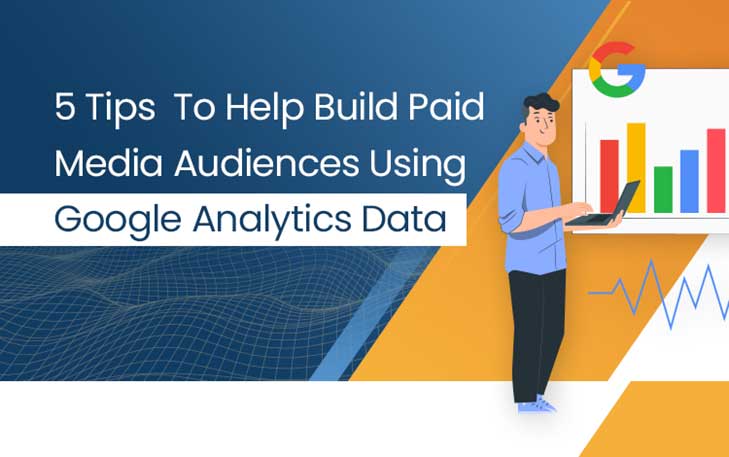Paid media is an expensive but necessary part of every brand’s marketing mix. In fact, the cost of paid media has steadily risen as the digital advertising landscape changes and new players emerge. But this doesn’t mean that you have to break the bank when building your paid campaign audiences. We all know that Google Analytics is a gold mine of information that allows you to learn more about your website visitors and their behavior on your site. It’s also a great tool to help you build paid media audiences with Google Analytics data. With that in mind, here are five tips to help you leverage the power of Google Analytics to build well-defined and targeted paid media audiences using their data:
Define Paid Media Audiences Based on User Behavior for Google Analytics
The first step in building paid media audiences with Google Analytics data is to identify the site and user behavior that defines those audiences. This can be done in a few ways. For example, you can segment your Google Analytics data by audience type, such as new visitors, returning visitors, or customers. You can also segment your Google Analytics data by user behavior. For example, you can segment your data by device, source, path, pages, or event. Whatever segmentation method you choose, make sure you define your paid media audiences based on user behavior and not demographics.
After all, Analytics doesn’t collect any demographic information. Google Analytics measures user behavior and gives you a ton of data about what your users are doing on your website. Because of this, Google Analytics is a powerful tool when it comes to building audiences for your paid media campaigns.
Determine the Right Advertising Objectives of Google Analytics
Another tip for building paid media audiences with Google Analytics data is to determine the right advertising objectives for your campaign. It can help you identify the most important events and goals on your website that your paid media campaigns should be focused on. Next, you can use those events and goals to inform the paid media objectives that you want to achieve with your campaign. For example, if you are running a PPC campaign to generate more sales, you’ll want to select the “conversion” objective. On the other hand, if you are running a Display campaign to increase brand awareness, you’ll want to select the “branding” objective.
From there, you can use those objectives to inform which audience segments you should be targeting. For example, if you are running a paid media campaign with the conversion objective, you should be targeting users who are likely to convert (e.g., new customers, customers in the purchase path, etc.).
Create Google AdWords Audience Groups
Next, you can use Google AdWords’ audience targeting feature to create audience segments based on your website visitors’ behavior. Once you’ve created these audience segments, you can then use them to inform which paid media campaigns you want to show those audiences. For example, you can use Google AdWords’ audience targeting feature to create audience segments based on your website visitor’s device, source, path, pages, or event.
Once you’ve created these audience segments, you can then use them to inform which paid media campaigns you want to show those audiences. This method of building paid media audiences with Google Analytics data is particularly helpful for brands that are running multiple paid media campaigns. It allows you to narrow down the audiences that each campaign should be showing and ensures that the correct audiences are seeing your ads.
Leverage Google Display Network Ads Data with Google Analytics
Another way to build paid media audiences with Google Analytics data is to leverage the Google Display Network (GDN) ads data. GDN is an ad network that allows you to run display ads on partner websites, apps, and other digital properties. With GDN ads data, you can create audience segments based on your website visitor’s device, source, path, pages, or event. Once you’ve created these audience segments, you can then use them to inform which GDN campaigns you want to show those audiences.
This method of building paid media audiences with Google Analytics data is particularly helpful for brands that are running GDN campaigns and have access to GDN ads data. It allows you to narrow down the audiences that each campaign should be showing and ensures that the correct audiences are seeing your ads.
Wrapping up
Paid media is an important part of every brand’s marketing strategy. However, it can be expensive. Thankfully,It is a great tool to help you build paid media audiences with Google Analytics data. In order to build paid media audiences with Google Analytics data, you first need to determine the right advertising objectives for your campaign. Then, you can create Google AdWords audience segments or GDN ads data to inform which paid media campaigns those audiences should be seeing. With these tips, you can build paid media audiences with Google Analytics data and better understand your website visitors.
For more information you Can visit Revolutionary designers website.







